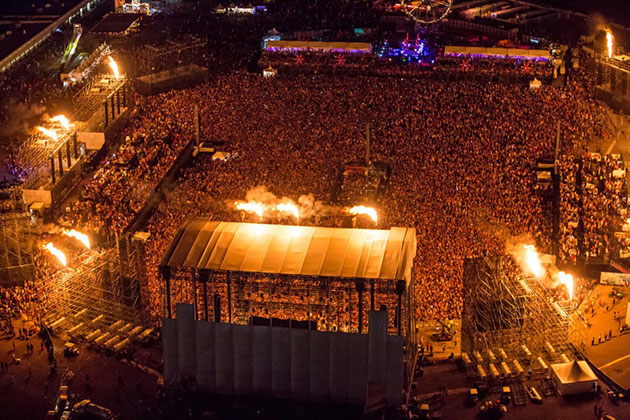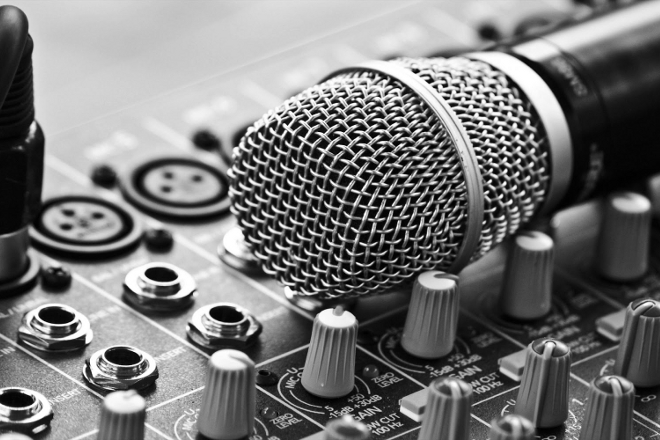Earlier in 2014, the International Music Summit in Ibiza put out a report stating that the electronic dance music industry was worth $6.2 billion in 2013. The amount significantly grew from a year before — $4.5 billion in 2012 – with factors ranging from greater demand for big-name DJs to more album sales in the U.S. and U.K. driving up figures.
So following this, website Quartz announced earlier in August that EDM is saving the music industry.
Most of Quartz’s argument derives from the International Music Summit’s report – the SFX IPO, “Wake Me Up” being the most played track in Spotify’s history, and a positive increase in track sales compared to negative growth in rock, pop, hip-hop/R&B, and country. However, although these figures are certainly impressive and another indication of EDM’s growing influence, Quartz doesn’t just recap the report.
Rather, they extrapolate on the less financially-driven sides. For one, dance music has enough clout to give a pop star a hit – think Cedric Gervais’ remix of Lana Del Rey’s “Summertime Sadness,” which netted the singer her first Top 20 single on the Billboard Hot 100. It’s almost as if, five years post-David Guetta breaking EDM into mainstream American music through the Black Eyed Peas that a reversal has occurred – that a producer, even one as lesser-known as Gervais, can bring up a pop star who wasn’t having as much luck with her singles.
As well, Quartz acknowledges that mainstream dance music crowds are the first to look past corporatization. This isn’t just the faltering SFX IPO; instead, crowds seem to realize that the mega events being put on in the U.S. and Europe aren’t possible without brand sponsorships, nor do they appear to abhor it when an artist makes an obvious money grab (like Swedish House Mafia’s “Greyhound” track for Absolut Vodka or Avicii appearing in Denim & Supply advertisements).
Do these factors truly “save” the music industry, which has seen decreasing album sales since the early 2000s and now only banks on a handful of artists? Quartz unfortunately doesn’t explore this aspect, but their hypothesis presents a foundation for exploring EDM’s influence circa 2014 – one that’s stronger, more pervasive, and appears as less of a novelty than it did any other time dance music hit the mainstream.
The Whole Picture
YourEDM responded to the piece by claiming that Quartz is picking through its data. As the counterargument, YourEDM claims that although dance music succeeds in digital downloads, it falters where other genres don’t – in physical album sales.
Yes, you might think, it’s 2014 – who the heck buys a physical album anymore? A jaunt to FYE or an independent record store shows that people still do – in CD and vinyl forms. According to figures from Statista, amongst this stronghold, dance music is absent, with the Frozen soundtrack, NOW compilations, and Beyonce’s, Pharrell Williams’, Katy Perry’s, and Lorde’s releases dominating the top physical album sold this year. As much as social media and digital music continues to grow, EDM’s lack of physical releases holds the genre back.
Along this note, YourEDM argues further that, although dance music festivals have exploded in the U.S., the attendance and sales brought in from a single-weekend event like Electric Daisy Carnival or Ultra don’t hold a candle to classic rock tours traversing the globe – where millions will attend. As such, dance music still doesn’t have a place in the top-grossing tours.
This was the case in 2012 when Forbes declared EDM the “new rock music”, and even with more money being brought in, it still holds true two years later.
The Festival
Supposedly, 90 percent of dance music’s revenue in the U.S. comes from festivals, which seem to be one of the genre’s stronger points.
Ticket sales follow the pattern of EDM’s overall ascent, with social media being a strong influence and holding more weight in comparison to other genres. But social media doesn’t appear to be the only driving force. As much as the International Music Summit’s report and ones like it cite fans’ sharing, tweeting, and liking during shows, SmartAssets.com brings another argument into the picture: Dance music’s popularity coincided with growing festival culture in the U.S., which they claim started with Woodstock 99.

Supporting this are major concert promoters like Live Nation putting significant stakes on dance music entities like Insomniac and Cream Holdings, which were purchased for $50 million and $7.8 million, respectively.
Along these lines, dance music has created a new live performance experience. Festival-goers don’t need to know exactly who’s on the bill – instead, they’ll pay $300-plus prices on three-day events for the atmosphere, a big visual spectacle, and remixes of familiar tracks. The dance music festival machine doesn’t appear to be stopping any time soon and, as EDM.com surmises, has changed listeners’ expectations for other genres. No longer is it sufficient to show up and perform serviceable versions of your hits — you have to find some way to keep them entertained.
Musical Imprint
As much as studies and editorials talk about the EDM experience, the music itself begins to seem secondary. It’s not just about the current EDM boom; rather, points in music history focus on the club or party experience and culture, be it for acid house, Daft Punk’s pyramid, or Tiesto introducing the stadium tour.
However, although dance music has had its moments, one factor keeping it from making any impact was its scattered nature. Putting it all under one name, The Verge claims, has made dance music appear more cohesive and unified.
As a potential result, dance music has started filling in the niche hip-hop occupied in the late ‘90s and 2000s, even to the point that rappers see a future in aligning with it. What’s resulted, beyond the occasional featured performer, are collaborations between hip-hop stars and dance music producers – either in equal parts, like Diplo working with Snoop Dogg, or rappers striving for a dance sound, like Waka Flocka Flame making a dance music album.
As much as this relationship seems like a last-resort approach, Fuse.tv points out that hip-hop and dance have long intertwined: The ‘80s saw Afrika Bambaataa sampling Kraftwerk and collaborating with Arthur Baker, while the ‘90s brought rap vocals on Eurodance and U.K. Garage tracks.
Becoming the “new hip-hop” seems to be how promoters are viewing dance music’s recent successes, rather than being a movement like disco, electronica, or even Depeche Mode performing to stadiums in the late ‘80s. Talking about its influence and staying power at the EDMBiz conference, John Boyle, the CFO of Insomniac, explained this, saying, “This isn’t disco. This is hip hop with a lot more legs.”
Not everyone’s convinced, however. Hip-hop performers – those dabbling in dance or those signed to a dance music label like Riff Raff – can’t seem to find an audience amongst dance music fans; rather, the production style, either in the form of trap or borrowed house and dubstep elements, appears to be more of a stronger path to keeping their careers relevant amongst mainstream pop audiences, who might be more preferential to a substandard David Guetta or LMFAO track than hearing more authentic fare.
Rappers aren’t the only ones benefitting from this approach. An EDM remix of a pop track has turned into the 12-inch single of modern times, and has managed to do something more: Serve as a vehicle for introducing pop singers to mainstream audiences. As DJ Bjorn points out, this approach brought Ellie Goulding, whose career started with Frankmusik collaborations and more recently included appearing on Calvin Harris and Skrillex tracks, some success in both the U.S. and U.K., and in less obvious instances, it gave performers like Foxes, Aloe Blacc, and Lana Del Rey exposure to audiences on which their standard fare would have been lost. For Del Rey specifically, collaborating with Cedric Gervais gave her music, known for treacly, contrived slow string arrangements on her debut, greater accessibility to a wider audience.
Economics
VICE, when covering the 2013 EDMBiz conference, touched on the fact that dance music has an economical formula: Few performers release albums, live performing comes down to the laptop and controller, and social media significantly bolsters marketing efforts.

In a sense, this combination, as much as it sheds a negative light on the state of the music industry, summarizes it as well. One, labels don’t want an artist demanding high figures to not turn in a profit – just look at Mariah Carey’s, Britney Spears’, or even Lady Gaga’s most recent efforts to see that star power doesn’t always translate to high, consistent sales. These days, dance music newcomers can ride high, even briefly, on a single track – like Avicii or Martin Garrix. And maybe that single track turns into something – like “Levels” eventually morphing Avicii’s career into True and “Wake Me Up” – or the one-hit artist ends up managing himself again and relying on a core group of social media followers. In this regards, not making a huge investment means less of a financial hit.
As well, the high salaries big-name DJs command in Las Vegas and even on Ibiza translate to more profit. With less gear, setup times, and rehearsals needed, it’s more that the artist, manager, and label end up pocketing.
Ultimately, from not putting huge amounts of money behind an artist who won’t deliver to taking advantage of listeners that want the festival experience rather than to see an artist perform, dance music seems to have a winning formula that’s keeping it afloat. The question, then, isn’t so much whether dance music will retain this movement in the mainstream realm but more along the lines of whether the rest of the music industry will adapt.




